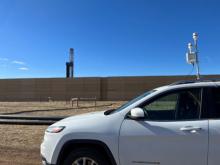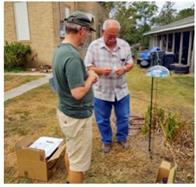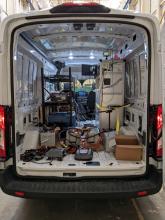Quarterly Update December 2022
In December 2022, HEI Energy launched our second round of quarterly updates. Learn more about our ongoing research associated with unconventional oil and gas development below.
Project Updates
Air Quality and Noise Research
Measuring and Modeling Air Pollution and Noise Exposure Near Unconventional Oil and Gas Development in Colorado
Read the full Research Report here
The goal of this study is to develop community exposure profiles in the Colorado North Front Range for chemicals in the air as well as noise over the UOGD lifecycle, from site preparation through production of multi-well pads. This study will assess potential exposure pathways connecting UOGD chemical emissions to nearby communities and use the results to better understand the public health implications. The investigators will apply the following methods to achieve these goals:
- Use a combination of existing air quality data, innovative air quality measurements, and source apportionment models to quantify potential exposures.
- Collect noise measurements from UOGD operations to quantify potential exposures.
- In collaboration with the Hildebrandt Ruiz team, develop the "TRAcking Community Exposures and Releases" (TRACER) model for use in the Denver-Julesburg region to predict chemical emissions from specific UOGD processes. The teams will combine the predicted emissions with an air quality model to estimate concentrations of chemicals in the air.
- Evaluate model performance by comparing air quality monitoring data collected by this and the Franklin team with model predictions in the Denver-Julesburg region.
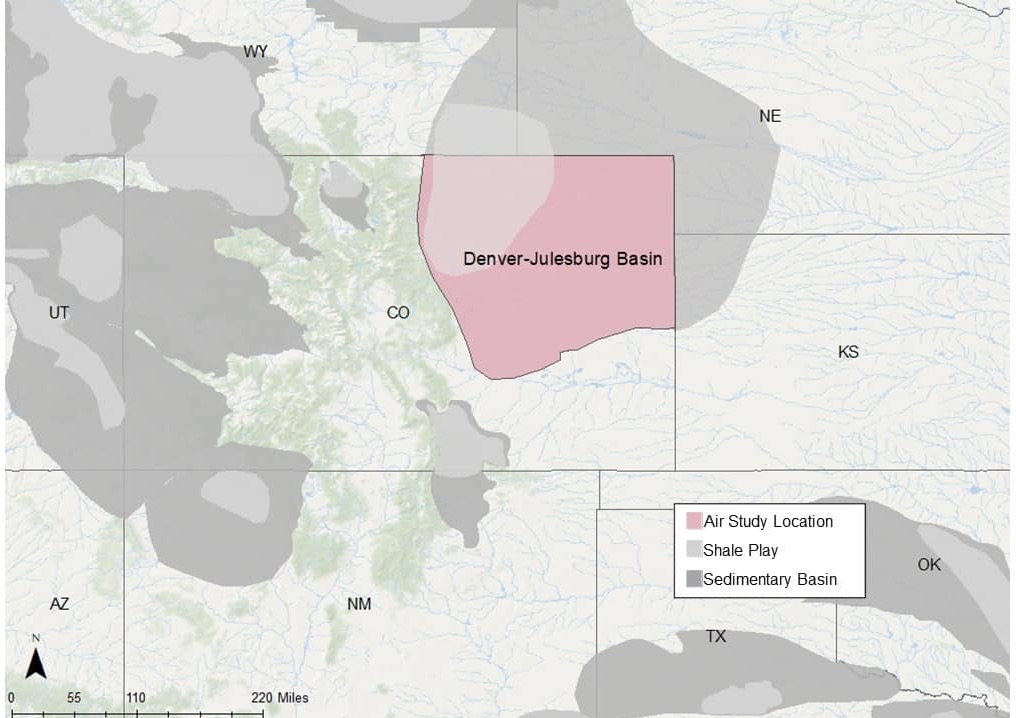
What's Happened
- Conducted two months of air monitoring around drilling operations.
- Completed several stakeholder engagement activities: met with a local operator, gave a project overview presentation at the August 31, 2022 meeting of the Colorado Oil and Gas Conservation Commission, and spoke with residents wanting to learn more about UOGD emissions at a Climate Action Event in Longmont, Colorado.
What's New
- Continuing air monitoring around drilling operations.
- Continuing to define UOGD operational activities for inclusion in the TRACER model in collaboration with Colorado State University and University of Texas-Austin.
- Reviewing past regional emissions data to define chemical patterns of emissions from specific UOGD operational activities.
What's Next
- Meet with an additional local operator about additional UOGD monitoring in 2023.
- Work with UT Austin to add estimates of drilling and hydraulic fracturing emissions to TRACER model.
Upcoming Events
Dr. Collet to give a keynote talk on UOGD air emissions at the Annual Conference of the American Meteorological Society in Denver on January 9, 2023.
Assessing Source Contributions to Air Quality and Noise in Unconventional Oil Shale Plays
Read the full Research Report here
The goal of this study is to understand potential community exposure to UOGD-associated chemicals and radioactivity in air as well as noise. The investigators will apply the following methods to achieve their goals:
- Monitor air quality and noise in the Permian region of New Mexico and the Eagle Ford region of Texas to understand how potential exposures vary across the regions and over different time scales.
- Combine existing air monitoring data in the Denver-Julesburg region of Colorado and original data collected in the Permian and Eagle Ford regions with statistical models to distinguish UOGD from other sources of chemicals in the air and noise sources.
- Leverage satellite data to examine the association between natural gas flaring and air quality.
Collaborate with the Collett and Hildebrandt Ruiz teams to evaluate the "TRAcking Community Exposures and Releases" (TRACER) model performance in the Denver-Julesburg and Eagle Ford regions.
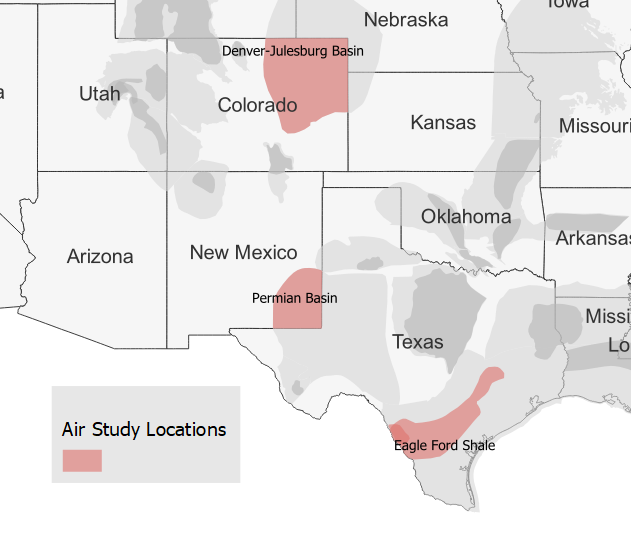
What's Happened
- Established a stationary air quality and noise monitoring location in Loving, NM.
- Fully outfitted a trailer with instruments that measure air quality and noise in preparation for deployment to the monitoring location.
- Analyzed data about well locations and flaring of natural gas in the Permian Basin, with specific focus on the Carlsbad and Loving, NM communities.
What's New
- Engaging with a community organization in Carlsbad, NM.
- Proposing a preliminary network layout of passive sampling devices to collect air quality data in the area stretching from Carlsbad to Malaga, NM.
- Running a 30-second public service announcement on Carlsbad radio stations, informing the public of upcoming air quality study and potential volunteer involvement.
What's Next
- Deploy the trailer to the Loving, NM monitoring location in mid-December 2022.
- Establish a website for sharing our results with the community.
- Contact landowners and community members in Carlsbad and Loving, NM for our passive sampling campaign. Please contact Dr. Gunnar Schade at gws@tamu.edu or +1-979-845-0633 if you would like to volunteer.
Upcoming Events
Community Open House in Carlsbad, NM in mid-January, 2023 to engage in a discussion about our research, air quality and noise sampling trailer, and to recruit community volunteers for the passive monitoring campaign. Contact Dr. Franklin if you would like more information about participating.
Predictive, Source-oriented Modeling and Measurements to Evaluate Community Exposures to Air Pollutants and Noise from Unconventional Oil and Gas Development
The goal of this study is to develop a broadly applicable model, the "TRAcking Community Exposures and Releases" (TRACER) model. The model will assess potential community exposures to chemicals in the air from UOGD and inform future health studies. The model will then be used to predict the magnitude and frequency of emissions from individual UOGD sources, and when coupled with dispersion modeling, will generate concentrations of chemicals in the air. The investigators will apply the following methods to achieve their goals:
- Collect stationary and mobile air quality and noise measurements in the Eagle Ford, Texas region.
- In collaboration with the Collett team, develop the TRACER model in the Eagle Ford region to generate chemical emissions data from specific UOGD processes. The teams will combine the predicted emissions with air quality models to estimate local and regional concentrations of chemicals in the air.
- Expansion of the TRACER model to the Marcellus region, leveraging data from the separately funded Appalachian Methane Initiative.
- Evaluate model performance by comparing air quality monitoring data with model predictions in the Eagle Ford region.
- Use TRACER model results to assess spatial and temporal variability of potential community exposures to UOGD-associated chemicals and evaluate the effects of different UOGD sources on potential community exposures.
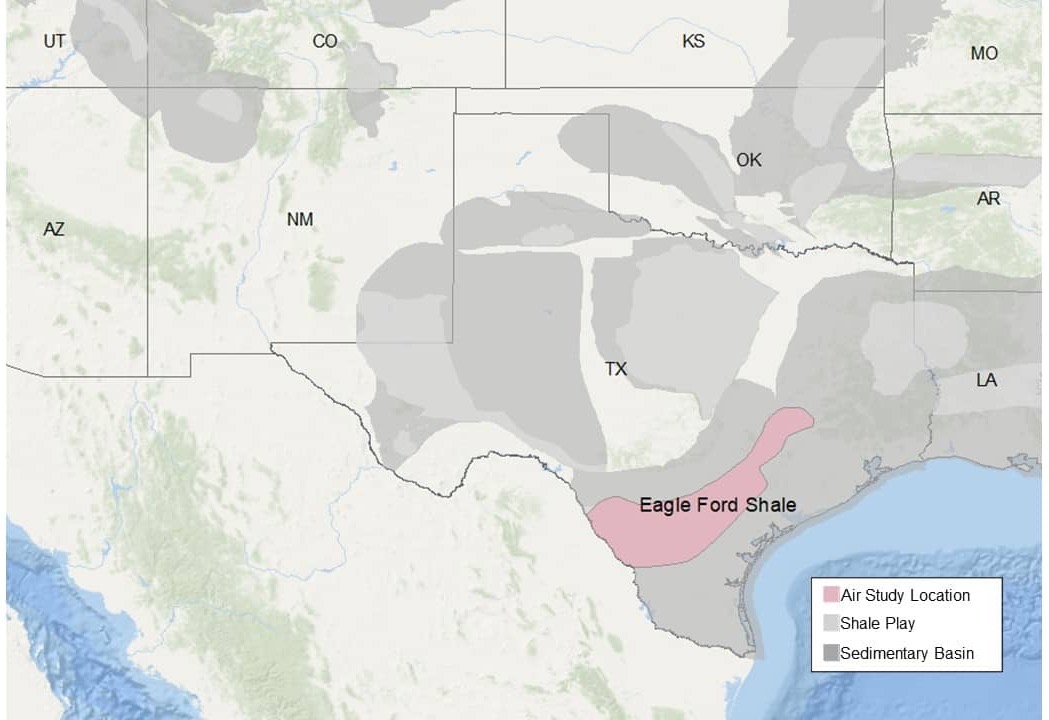
What's Happened
- Set up and tested an all-electric mobile monitoring vehicle outfitted with instruments that measure air quality and noise.
- Began to evaluate the effects of UOGD on regional levels of ozone in the air and on the emissions of nitrogen oxides.
What's New
- Wrapping up preparations for air quality and noise monitoring in Karnes County, beginning in Spring 2023. The monitoring is designed to capture emissions associated with UOGD, including flaring of natural gas.
- Continuing to develop the TRACER model, which will predict local and regional concentrations of chemicals in air associated with UOGD. Initially, we are estimating chemical emissions annually at the county level.
What's Next
- Organize and host community meetings before air quality and noise monitoring begins.
- Begin monitoring near Karnes City in Spring 2023.
- Using the TRACER model, evaluate the influence of EPA's proposed methane rule on the emissions of other chemicals from UOGD.
Upcoming Events
Dr. Bhattacharyya, a research team member, will present a paper titled "High Chlorine Emissions from Unconventional Oil and Gas Development Impact Atmospheric Composition through Radical Chemistry" at the December 2022 American Geophysical Union Meeting.
Water Quality Research
Using Geoscientific Analysis and Community Engagement to Analyze Exposures to Potential Groundwater Contamination
Read the full Research Report here
The overall goal of this study is to evaluate potential linkages between unconventional oil and gas development (UOGD) and groundwater contamination in a tri-county region of Pennsylvania with many overlapping potential sources of contamination. The analysis will be informed by focus groups in the region to help identify areas of community concern. The team plans to produce a broadly applicable framework to study the relationship between specific UOGD processes and potential groundwater contamination. The investigators will apply the following methods to achieve their goals:
- Combine an existing data set of chemical measurements in groundwater with machine learning to isolate the influences of natural and anthropogenic processes on groundwater chemistry and to identify chemical signatures of UOGD.
- Evaluate linkages between UOGD and potential water contamination.
- Develop an approach to map locations of potential contamination from UOGD activities for application to future investigations of potential human exposures and health effects associated with UOGD.
- Collected and analyzed well water samples well water in “hot spots” identified through their analysis as likely locations of wastewater spills, in order to evaluate the team’s approach.
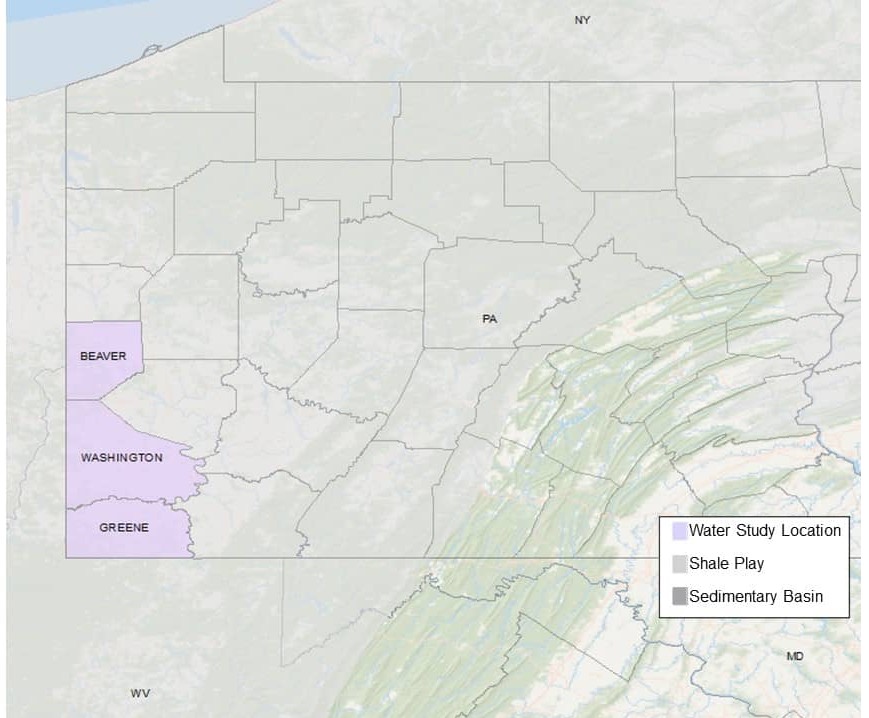
What's Happened
- Continued to analyze water quality data for chemical patterns that indicate potential contamination from various forms of energy development.
- Continued to analyze information shared by community members during focus groups earlier this year.
- Dr. Shaheen presented research at the November 2022 meeting of the Society of Environmental Toxicology and Chemistry in Pittsburgh, PA.
What's New
- Completing analysis of water quality data.
- Preparing for additional community focus groups in spring 2023.
- Planning for the 2023 Shale Network Workshop with a panel related to this study.
What's Next
- Host additional focus groups with communities in spring 2023.
- Write summaries of our analysis of water quality data and findings from community focus groups.
- Begin to assess community exposure to chemicals in water.
Upcoming Events
- Dr. Brantley, a research team member, will present the paper, "Water Quality Impacts from Shale-gas Development from Case Study to Statistical Analysis and from Pennsylvania to the USA," at the December 2022 American Geophysical Union meeting.
- • Mr. Harrington, a research team member, will present a paper titled "Something in the Water?: Exploring Uncertainty and Knowledge Gaps around Drinking Water Contamination from Unconventional Oil and Gas Drilling development in Washington County, PA" at the March 2023 American Association of Geographers Annual Meeting.
Assessing the Effects of Unconventional Oil and Gas Development on Community Water Sources
The study is complete and now undergoing peer review and an independent quality assurance/quality control audit before HEI Energy releases the research report in the first part of 2026.
The goal of this study is to evaluate whether instances of community water supply contamination in Colorado and New Mexico might be the result of unconventional oil and gas development (UOGD). The study will be useful for understanding the UOGD operational conditions that might present a risk to community water supplies. The investigators will apply the following methods to achieve their goals:
- Analyze existing groundwater and surface water quality data for community water supplies near UOGD and examine correlations between water quality and oil and gas operational data.
- Examine temporal and spatial correlations between UOGD and community water supply contamination to identify possible exposure pathways.
- Model contaminant transport along possible exposure pathways to evaluate the feasibility of the pathways connecting community water supplies with UOGD.
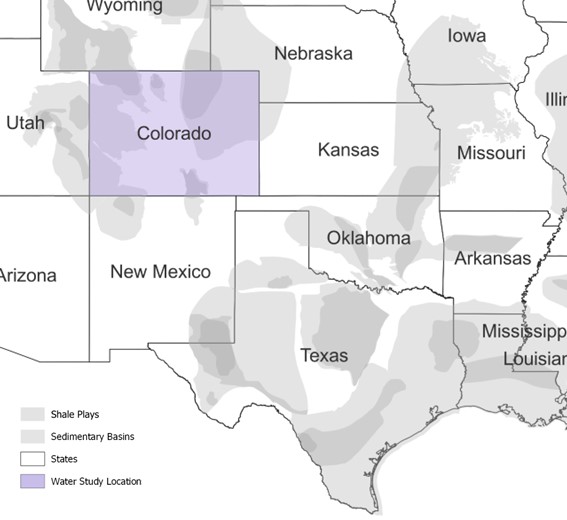
What's Happened
- Analyzed community water supply data and oil and gas operational records for Colorado to assess whether detected chemicals might be associated with UOGD.
- Consulted with state officials in New Mexico about the availability of water quality data and oil and gas development operational records to inform the research.
What's New
- Continuing to analyze water quality data and oil and gas operational records for Colorado to identify potential indications of UOGD sources affecting community water supplies.
- Identifying case studies of possible pathways connecting communities with UOGD.
What's Next
- Assess whether the case study connections between UOGD sources and communities are feasible by modeling how chemicals from UOGD might move through the environment.
- Engage with communities, state officials, and others to increase awareness of the research and its relevance to policy decisions to protect public health.


